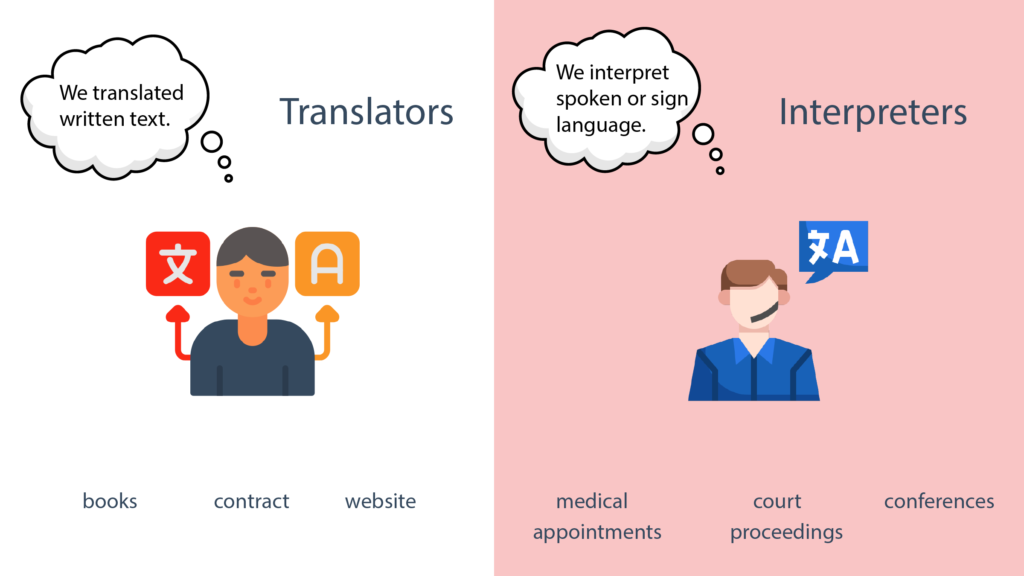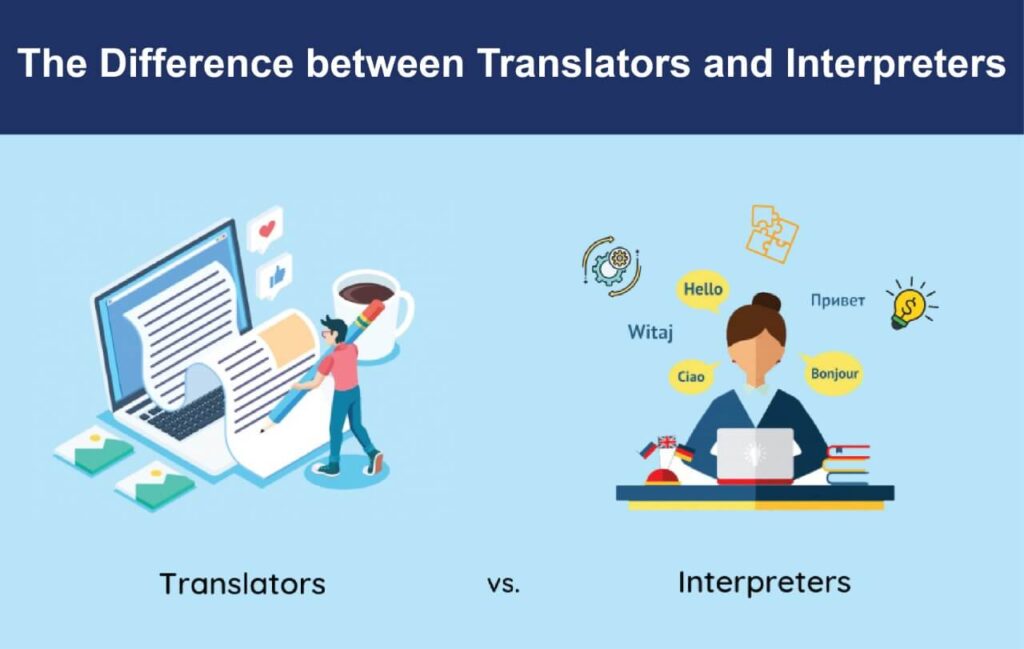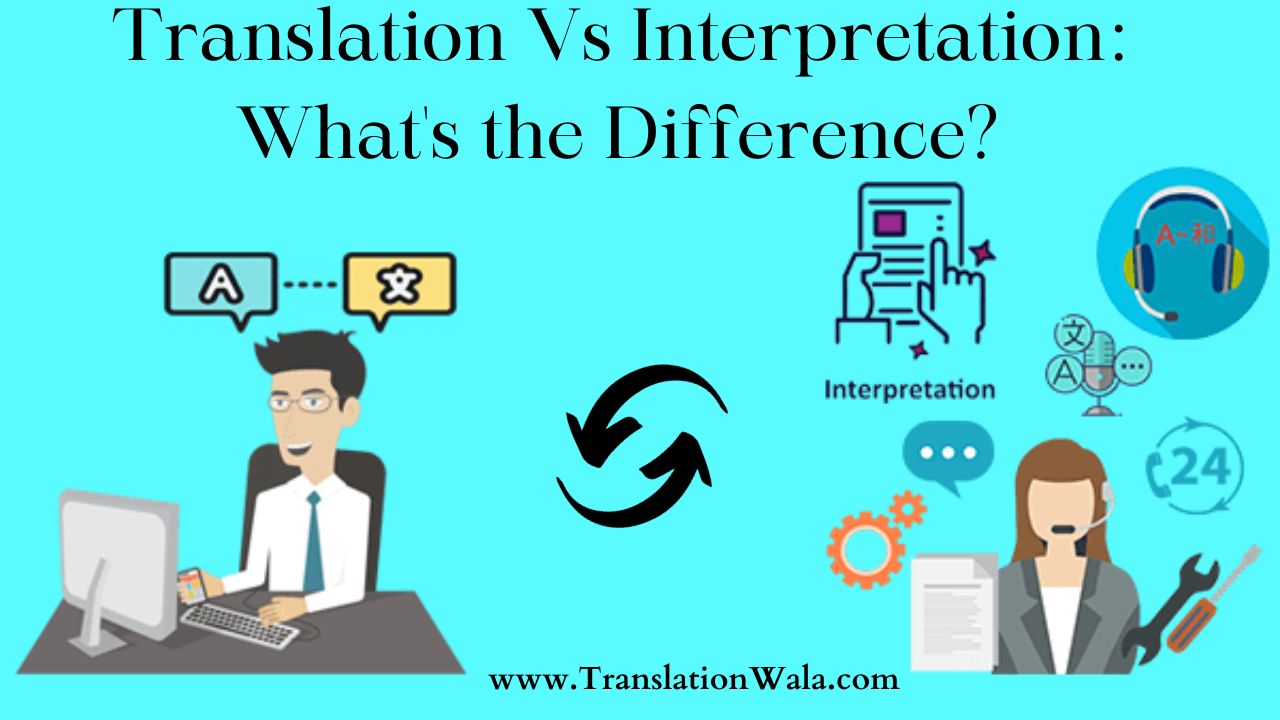Although translation and interpretation are closely related, they are not the same. The process of transferring written text from one language to another is known as translation, whereas the process of transmitting spoken words from one language to another is known as interpretation.
Translation
Translation is a difficult procedure that necessitates a thorough understanding of both the source and destination languages, as well as the text’s cultural context. Translators must be able to precisely transmit the meaning of the original text while also maintaining the text’s style and tone.
There are many different types of translation, including:
- Literary translation: Literary works such as novels, poems, and plays are translated.
- Technical translation: Technical documentation, such as manuals, software, and engineering drawings, is translated.
- Medical translation: Medical document translation includes patient records, research articles, and prescription labels.
- Legal translation: Legal papers such as contracts, agreements, and court transcripts are translated.
- Commercial translation: Commercial papers such as marketing brochures, websites, and product packaging are translated.
Also Read: What Is App Localization? Benefits of App Localization?

Interpretation
The practice of transmitting spoken language from one language to another is known as interpretation. Interpreters must be able to listen to the speaker in the source language and then instantly deliver the message to the audience in the target language, all while keeping up with the speaker.
There are two main types of interpretation:
- Simultaneous interpretation: The interpreter translates the speaker’s words as they are said.
- Consecutive interpretation: While the speaker is speaking, the interpreter takes notes and then interprets the speaker’s words once the speaker has finished.
Also Read: English to Tamil Translation – Breaking the Language Barrier

Differences between Translation and Interpretation
The following table summarizes some of the key differences between translation and interpretation:
| Characteristic | Translation | Interpretation |
| Medium | Written | Spoken |
| Speed | Not time-sensitive | Time-sensitive |
| Accuracy | Can be very high | Must be high, but may not be perfect |
| Cultural context | Important | Important, but not as critical as in translation |
| Skills required | Deep knowledge of both the source and target languages, the cultural background of the text, and the ability to accurately transmit the meaning of the original text while maintaining the style and tone of the text are all required. | Deep awareness of both source and target languages, speakers’ cultural context, good listening and speaking abilities, and the capacity to think fast and accurately under pressure |
When to Use Translation vs. Interpretation
Translation is commonly employed when converting written text from one language to another. You might need to translate a website, a business document, or a book, for example.
When you need to communicate with someone who speaks a different language in real time, you usually employ interpretation. You might require an interpreter to talk with a doctor, a lawyer, or a business partner, for example.
Conclusion
Translation Vs interpretation are two significant services that can aid in cross-cultural communication. If you need someone to translate or interpret text or voice, you should hire a competent expert who has the necessary skills and experience to provide you with accurate and dependable services.



